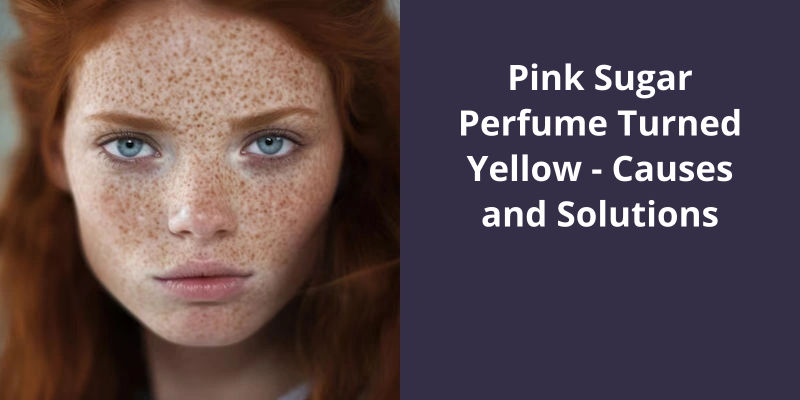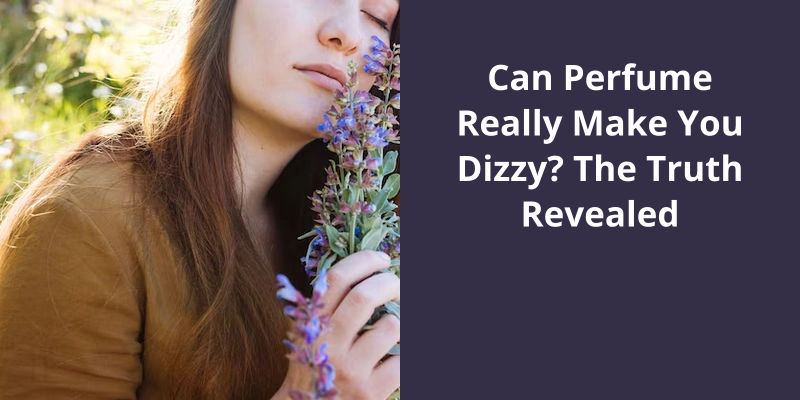The Pink Sugar Perfume turning yellow is a common occurrence, usually caused by certain factors including temperature fluctuations, light exposure, and oxygen degradation, often referred to as oxidation. If your perfume is stored in a location with high temperature or is frequently exposed to light, the colour might change. Additionally, over time, the fragrance’s interaction with oxygen can also lead to it changing color. However, none of these alterations typically affect the scent or usability of the perfume. One should also be aware that this color transformation might be a signal of the perfume nearing its expiration date, especially if you’ve owned it for a long time. Always remember to store your perfume properly, preferably in a cool, dark place for the best longevity and to maintain its original color.

What Does Yellow Fragrance Mean?
The color of a fragrance can provide valuable clues about the quality and longevity of the scent. Yellow fragrance, in particular, can be an indicator that the perfume has started to oxidize. This can happen over time as the scent is exposed to air, light, and heat. The oxidation process can alter the chemical composition of the fragrance, leading to a change in color and scent.
This can be especially noticeable if you’ve a clear bottle that allows you to see the color of the liquid inside. While the change in color may not be immediately apparent, it can be a sign that the fragrance is starting to degrade.
If you notice that your perfume has a yellow tint, it may be time to consider whether it’s still suitable for use. Over time, the scent may become less potent or develop a musty smell that isn’t pleasant. If you find that you’re no longer enjoying the fragrance, it may be time to replace it with a new bottle.
If you’re unsure whether your perfume is still good, you can always ask for a second opinion from a friend with a trusted nose. They may be able to tell you if the scent has gone bad or if it still smells as it should. Ultimately, taking care of your fragrance collection can help ensure that you always have access to great smelling scents.
How to Properly Store and Care for Perfume to Prevent Oxidation and Degradation
To ensure that perfume doesn’t oxidize or degrade, it should be stored in a cool, dark, and dry place away from sunlight and heat. The bottle should be tightly closed to prevent air exposure, and it’s important to avoid shaking the bottle as it can introduce air. Additionally, perfume shouldn’t be stored in the bathroom or near any other damp areas.
It’s important to learn about the effects of oxidation on perfume, as it can drastically change the scent and quality of your fragrance. The process can occur in both opened and unopened bottles and can cause discoloration and alterations to the scent. However, there are ways to prevent and slow down oxidation, which we will explore in further detail.
What Is Oxidized Perfume?
Oxidation is a chemical reaction that occurs when the fragrance molecules come in contact with oxygen in the air. As the oxygen reacts with the molecules, it can alter their chemical structure and change the scent of the perfume. This is why oxidized perfume has a very different smell to a fresh, unopened bottle.
One common sign of oxidized perfume is a darker fluid. However, oxidation can also cause other changes to the liquid, such as a thickening or crystallization of the perfume. These changes can alter the texture of the perfume and make it difficult to spray.
Many people notice that oxidized perfume smells “off.”. It can have a musty, sour or rancid scent that isn’t pleasant.
To prevent perfume from oxidizing, it’s best to store it in a cool, dark place and to keep the bottle tightly sealed. If you notice that your perfume has become darker or has an unusual or unpleasant scent, it’s time to replace it with a fresh bottle. Keeping your perfume fresh and properly stored will ensure that you always smell great and that your favorite scent lasts for as long as possible.
How Do Temperature and Humidity Affect Perfume Oxidation?
Perfume oxidation is affected by temperature and humidity levels. Higher temperatures and humidity can accelerate the oxidation process, leading to a shorter shelf life of the fragrance. This is why it’s essential to store perfumes in cool, dry places away from direct sunlight and humidity.
Source: How long does perfume last? – Splash of Scent
It’s common knowledge that perfume can undergo changes in scent and texture over time. However, what about it’s color? According to experts, perfume can indeed turn brown as it ages, altering it’s appearance as well as it’s overall quality. As we delve deeper into the science behind these changes, let’s explore the possible reasons behind why such transformations occur and how to prevent them from happening.
Can Perfume Turn Brown?
Perfume is a delicate and complex mixture of essential oils, aroma compounds, fixatives, and solvents. Over time, the chemical components of the perfume can react with each other, with exposure to light, air, and heat, or with other external factors, to change it’s color, scent, and quality. One of the common signs that perfume has gone bad is that it turns brown or darker in color. However, not all perfumes turn brown when they spoil, and not all brown perfumes are necessarily spoiled.
Likewise, some fragrances, such as amber and musk, are naturally dark or amber-colored, and their richness and depth can increase with age.
Therefore, to determine whether a brown perfume is still good, you should rely more on your sense of smell than on the color. If the perfume smells off, rancid, or stale, or if it’s lost it’s original fragrance notes and intensity, it may be time to replace it or dispose of it. On the other hand, if the perfume still smells pleasant and balanced, and if it doesn’t irritate your skin or cause any allergic reactions, it could be still usable, albeit with some changes in it’s character and aroma.
To prevent perfume from turning brown, you should store it in a cool, dark, and dry place, away from direct sunlight, heat sources, or humidity. You should also keep the bottle tightly sealed to avoid air exposure, and avoid shaking or moving it too much. Another way to extend the life and quality of your perfume is to use it sparingly and not every day, as frequent and excessive use can accelerate the degradation process. Finally, you should also consider the shelf life and expiry date of your perfume, which can vary depending on the brand, ingredients, and storage conditions, and dispose of it once it’s passed it’s prime.
How Can You Properly Dispose of a Deteriorating Perfume?
- Don’t dispose of the perfume in the regular trash as it can be harmful to the environment and may even be illegal in some areas.
- Check with your local hazardous waste disposal facility or department to see if they accept perfumes for disposal.
- If the perfume is still usable but just not your preference, consider donating it to a local charity or organization.
- If you can’t dispose of the perfume properly, store it in a safe, cool, and dry place until you can find a proper disposal method.
Conclusion
In conclusion, the transformation of pink sugar perfume to a yellow color can be attributed to various factors. The change in color may be due to the exposure of the perfume to light and air, or due to a reaction between the fragrance components and external factors. However, it’s advisable to store fragrances away from direct sunlight and to use them within their recommended shelf life to preserve their quality.





